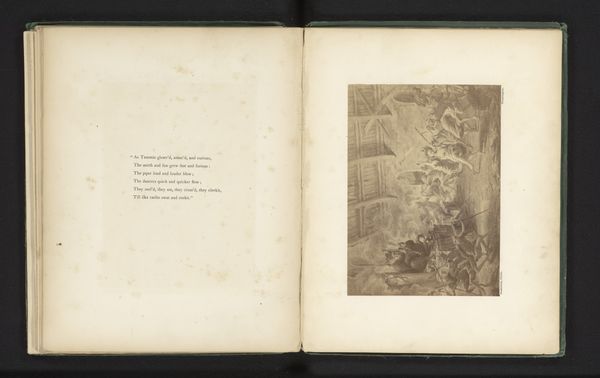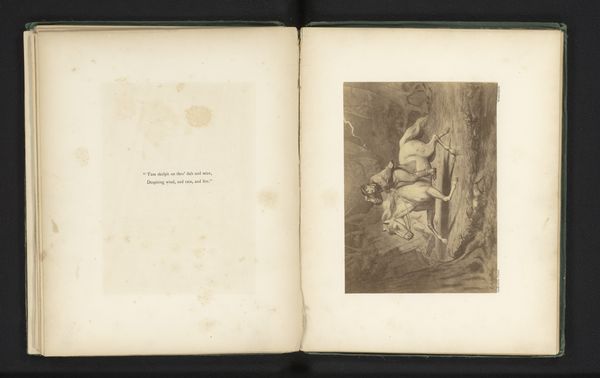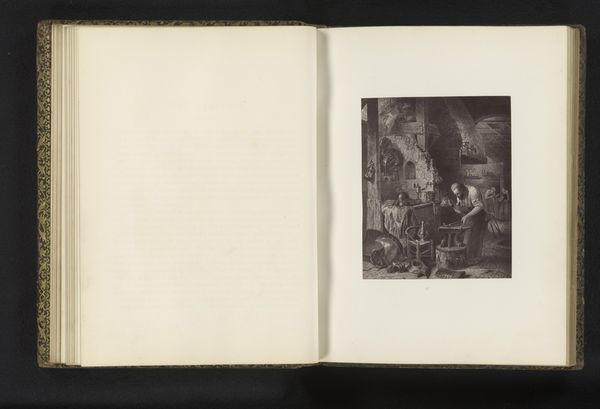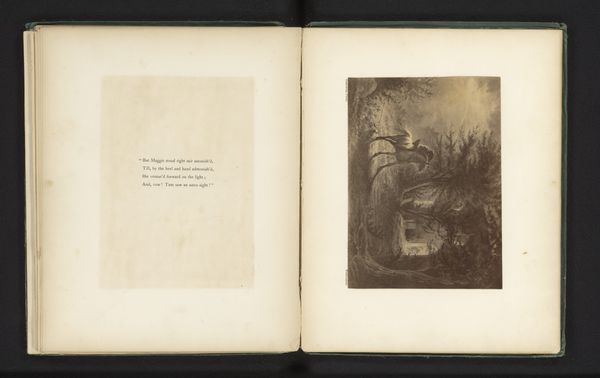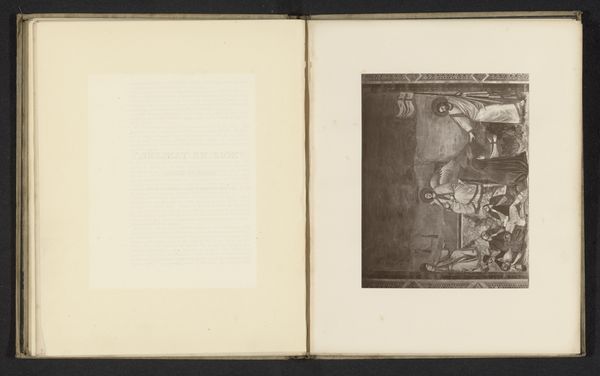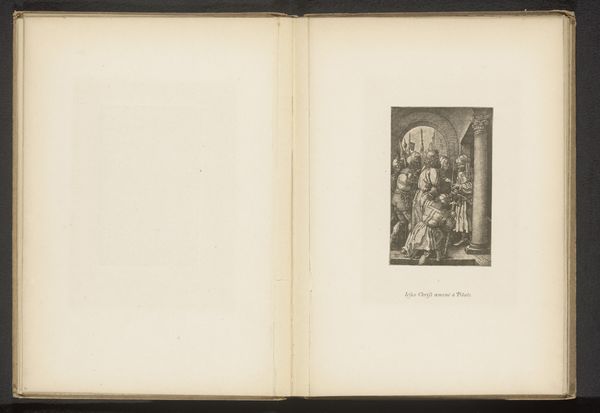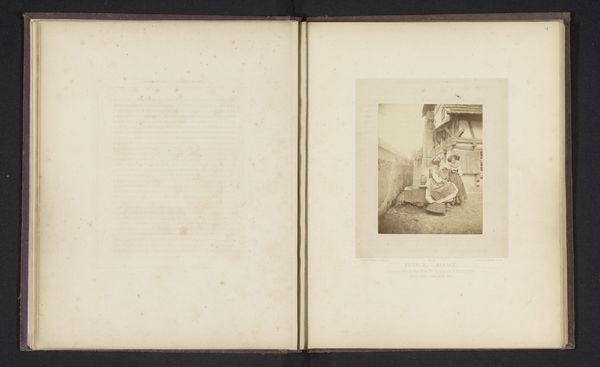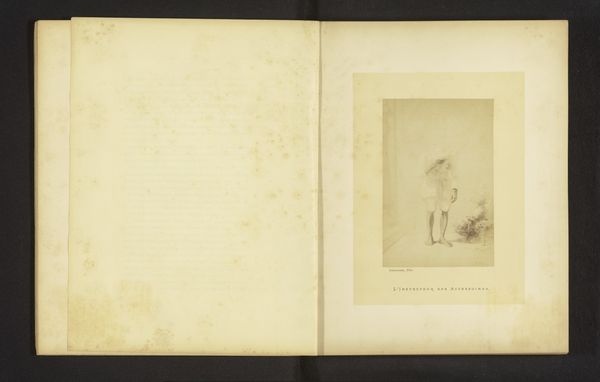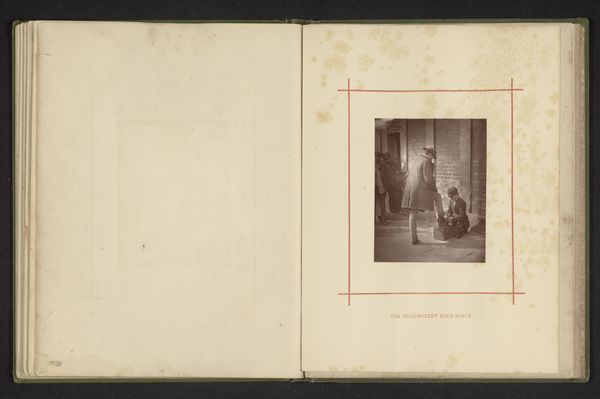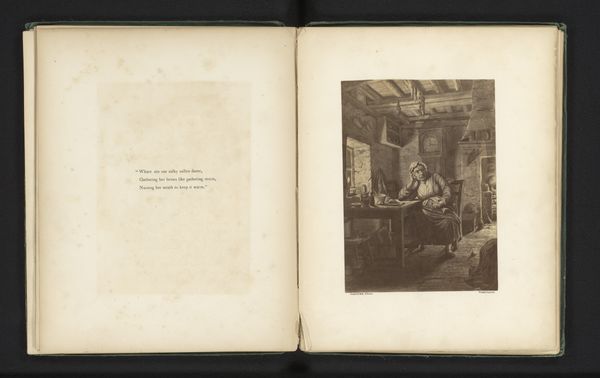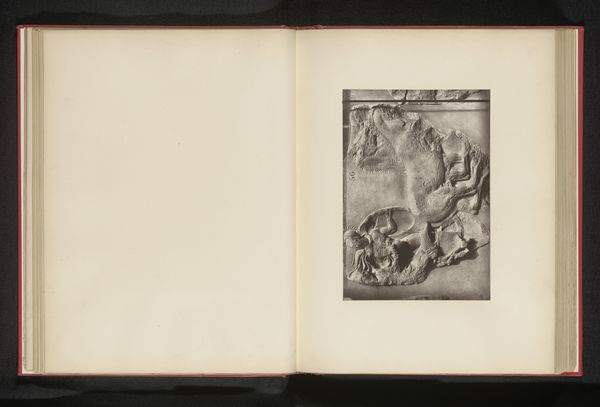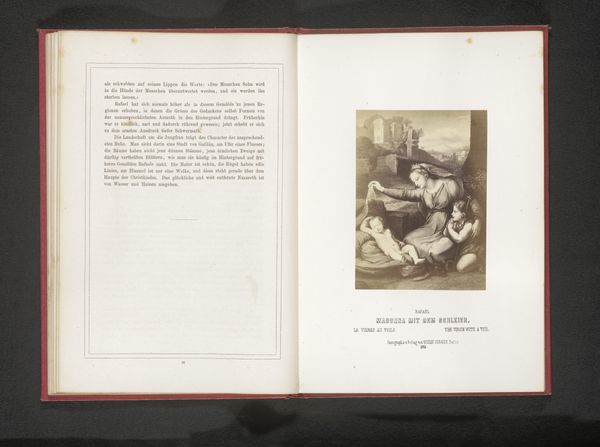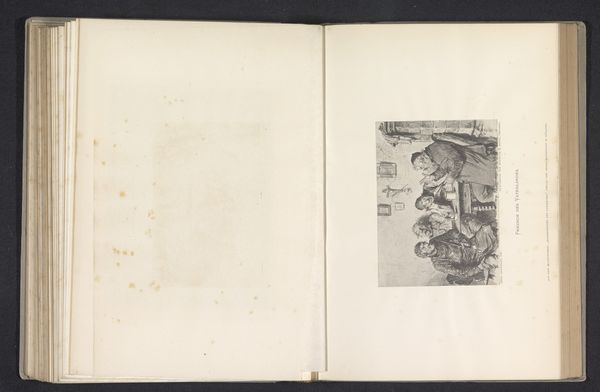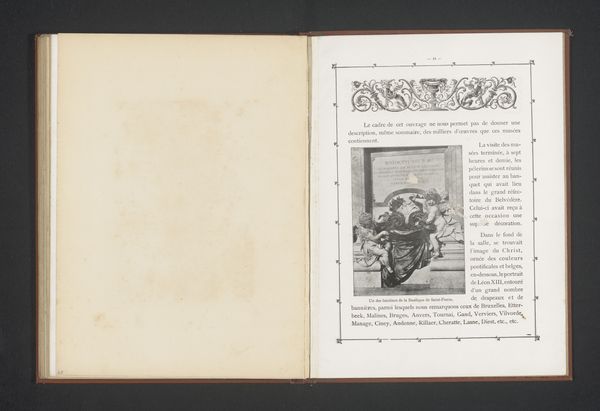
Fotoreproductie van een tekening, voorstellende mannen begroeten een Tam te paard voor een kroeg before 1868
0:00
0:00
drawing, print, paper
#
portrait
#
drawing
#
aged paper
#
homemade paper
#
narrative-art
#
paperlike
# print
#
sketch book
#
paper texture
#
paper
#
personal sketchbook
#
hand-drawn typeface
#
folded paper
#
thick font
#
paper medium
Dimensions: height 124 mm, width 171 mm
Copyright: Rijks Museum: Open Domain
Editor: So, here we have a photographic reproduction of a drawing called "Fotoreproductie van een tekening, voorstellende mannen begroeten een Tam te paard voor een kroeg," created before 1868 by Alexander Gardner. It depicts a scene outside a tavern, and I’m struck by the age and the texture of the paper. How do you interpret this work, particularly its historical context? Curator: What resonates with me here is the depiction of social interaction in this piece and, importantly, the potential power dynamics that it reveals, or maybe obscures. Consider the moment it was captured – pre-1868. What does the depiction of men greeting another ‘on horseback’ outside of the bar tell us about status, class, and gender relationships during that time? Is this image romanticizing or critically observing this social structure? Editor: That’s interesting, I hadn't considered that the image could be seen as commentary. I assumed it was a simple snapshot. Curator: Precisely. And "snapshots" can be deceiving. I would wonder about what kind of political statement might it be? Think about it – photography was emerging as a documentary tool and was soon implicated in power structures of representation. The presence, or lack thereof, of different ethnic and social groups should be considered. I see this work, therefore, opening up broader intersectional narratives. How might this scene look if rendered by a female artist? Editor: I guess the question isn’t just *what* is depicted, but *how* and *why.* What assumptions are embedded within the very act of observation and documentation? Curator: Exactly! How do our own contemporary biases inform what we perceive? By engaging in this critical analysis, we’re able to delve into a much deeper understanding of art’s relationship to identity, gender, race and the socio-political sphere. Editor: Thank you, this conversation really changed my initial impressions. I now appreciate how it speaks volumes about society during that era!
Comments
No comments
Be the first to comment and join the conversation on the ultimate creative platform.
